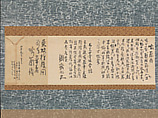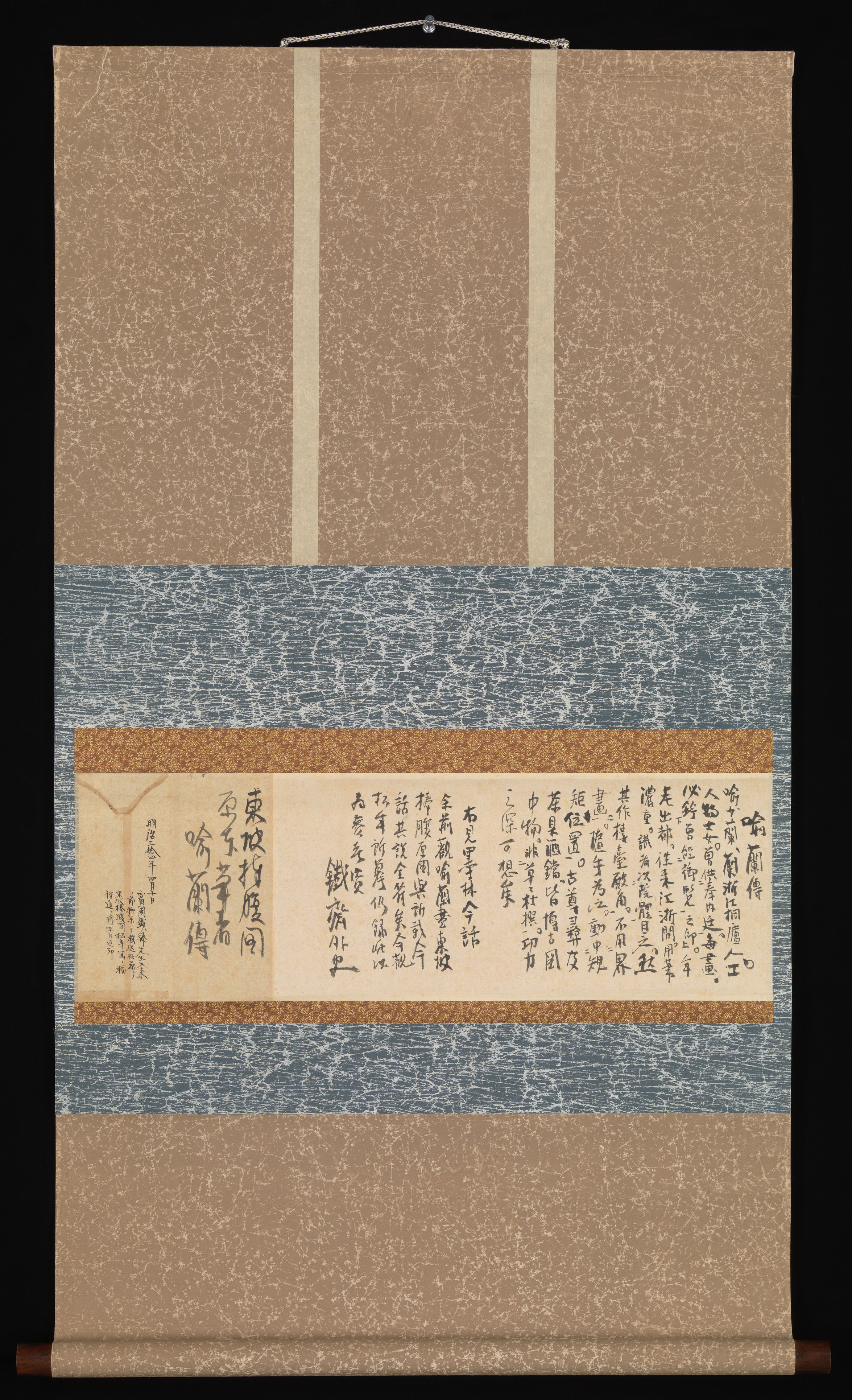Su Dongpo Laughing
Suzuki Shōnen 鈴木松年 Japanese
Not on view
The famous Chinese poet Su Dongpo (Su Shi, 1037–1101) of the Song dynasty and three richly clad women stand in a space filled with the ideal accoutrements and furnishings of a scholar-gentleman: carved bookcases littered with books, flowers, and ornamental objects, small tables displaying more decorative objects, a carpeted dais, and the convoluted and perforated rocks, often called Lake Tai rocks, with which scholars loved to ornament their studies. The poet converses with the woman facing him, while the other two ladies speak with each other. There appears to be a narrative element to this image, and it is possible that it represents a popular story about the poet, his verbal exchange with a Chan (Zen) Buddhist monk named Foyin, and his laughter when he returned home and recounted the meeting to his sister. It may also reference an anecdote in which Su Dongpo asked his concubine and maid servants if they knew what his belly was full of. As the poet is shown resting one hand on his protruding stomach, the latter tale may have been the inspiration.
The Kyoto-based Shōnen was a professional painter, the son of Suzuki Hyakunen, an artist who worked in the Shijō and Nanga styles of painting. Shōnen became head of the northern division of the Kyoto Prefecture Painting School in 1881, and he displayed his art and won awards at both domestic and international exhibitions, including the World’s Columbian Exhibition in Chicago, and the Paris Exposition Universelle of 1900. This painting is an unusual work within Shōnen’s oeuvre, as many of his compositions consist of landscapes or pine trees painted in ink with only light touches of color.
Due to rights restrictions, this image cannot be enlarged, viewed at full screen, or downloaded.
This artwork is meant to be viewed from right to left. Scroll left to view more.



